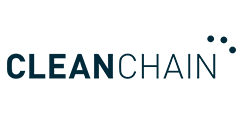The Hidden Risks of Dark Suppliers
Article
Avoid an iceberg supply chain with agreements, systems and processes that enable visibility into the chemical usage and emissions data.
Net Zero demands action
Pressure is mounting for organizations to demonstrate safe operations and reduce their environmental impacts throughout the supply chain as countries and industries work towards net zero targets. Yes, it’s that dreaded and overused word again: sustainability. But what is sustainability in supply chains? The UN Global Compact and BSR defines it as ‘the management of environmental, social and economic impacts, and the encouragement of good governance practices, throughout the lifecycles of goods and services.’ When you consider the scale and complexity of some supply chains, it could mean hundreds of thousands of processes, stakeholders, and organizations to keep track of and manage.
While it seems to land on the brand’s shoulders to drive better sustainability within their supply chains, the responsibility actually lies with each organization, from the chemical manufacturer to the supplier, as well as the consumer brands. You can claim sustainability in supply chains only when each party is trying to manage and improve their environmental impacts. Brands however tend to be the driving force behind greener initiatives as they will want to display their ESG or CSR performance data publicly.
Transparent suppliers vs. Dark Suppliers
As a brand, it’s extremely hard to know your true environmental impact and conformance with the latest regulations. Working in partnership with suppliers that are transparent about their emissions data is a great start, and these entities can be monitored for ongoing improvements. In a typical supply chain, however, many suppliers do not give this information willingly, we think of these as ‘Dark Suppliers’ who pose multiple high risks due to the lack of visibility into their operations.
Different types of supplier risks
- Reputational risk – The risk to your organization’s reputation due to the visibility of harmful chemicals used in your products.
- Regulatory risk – The risk of non-compliance with the regulatory requirements associated with suppliers in the jurisdictions you operate.
- Commercial risk – Financial loss from consumers choosing other brands that show greater verified transparency with their sustainable products.
- Sustainability risk – Without transparency, it is impossible to achieve the targets set out by your organization and reduce scope 3 emissions.
Supply Chains = An overall lack of information
Without knowing the environmental performance and emissions data from its suppliers, brands are left in the dark when it comes to sharing their own ESG and environmental performance data with stakeholders and customers. A recent ESG report from Coupa, says that businesses are “suffering from major blind spots in their supply chains” making it impossible to achieve ESG goals. Highlights included:
- Almost three-quarters of businesses (73%) cannot tell if their closest supply chain partners meet any kind of ESG standards – including their own.
- Only 37% of large enterprises said they had an effective risk management system in place to ensure the environmental and social integrity of their supply chains.
- Half of the businesses (49%) said a lack of data sharing was the top factor preventing businesses from accurately assessing suppliers’ ESG actions.
Scarily, this lack of data submitted by Dark Suppliers means that a massive proportion of a brand’s supply chain is likely to be non-compliant. This is backed up by the 2021 International Trade Centre and Social & Labor Convergence Program stating that ‘The data continues to show that a very high number of facilities (91%) are not legally compliant.’
Why is tracking supply chain sustainability performance data such a struggle?
The evidence above makes it clear that there is a challenge when it comes to environmental reporting throughout the supply chain, but why is this the case? We break it down into three key areas: complexity, ignorance and education.1. Complexity
Collecting all your supplier’s emissions data is a time-consuming and complicated task. Where or whom do they send it to? In what format? What data points are needed for consistent and comparative reporting?
Even when the data is accessible, comparisons can be difficult. As this article from GreenBiz explains‘ A supplier may have a relatively small footprint but is that because its analysis excluded certain activities, such as transport, that rivals included? There’s also the issue of trust. What’s to stop a supplier from knowingly bending the rules and claiming that, for example, its operations were powered by renewables when in truth the electricity came from fossil fuels?’
Research from Accenture reported supply chains generate 60% of global carbon emissions, yet this number is likely to be higher when you consider the difficulties of measuring Scope 1-3 emissions. Scope 3 (all indirect emissions that occur in the value chain of the reporting company, including both upstream and downstream emissions) in particular tends to be the largest contributor for many businesses, accounting for over 70% of the total footprint.
It certainly isn’t easy for any brand to feel 100% confident in its sustainability performance data when considering the entire supply chain. It can be a long, challenging and complex road to get there.
2. Ignorance
Intentionally or accidentally, a lot of suppliers do not measure their emissions at present. Is this because it isn’t made mandatory by a brand or jurisdiction? Or are they simply unaware of what is required and by whom?
Whatever the reason, this forces brands to publish only the information they know, and consumers cannot make informed decisions about the brands and products that they want to buy and support. A recent Accenture study found that 42% of consumers would be willing to walk away from companies that don’t align with their social beliefs – so it’s clearly an important part of the buying decision. Brands that do not have access to this data will lose out on potential sales, whereas brands that publish inaccurate information will be deceiving their customers. We know through our own findings that 50% of factories’ chemical inventories are currently unaccounted for, and this makes it hard for brands to genuinely prove their sustainability performance.
3. Education
Knowledge about net zero goals, ESG and emissions reporting should not be underestimated or undervalued. A brand might be aware of the environmental goals and targets set out by the industry or jurisdiction, but that doesn’t mean the rest of its supply chain understands its objectives and legal requirements. And why is this even relevant to them if they operate in another jurisdiction?
Worryingly in 2020, CDP found that only 11% of companies were showing an awareness of water pollution across their whole value chain. This low awareness could also be seen within the CleanChain data as minimal levels of wastewater emissions data were consistently being uploaded from suppliers over the 2021 period. It’s clear there is a knowledge gap that needs to be addressed within supply chains.
Ultimately it is a brand’s responsibility to educate the value chain about its sustainability commitments and to set requirements, targets and goals with suppliers that can be incrementally improved over time. Any environmental commitment should have its own change management plan to drive the change successfully throughout the supply chain and ensure effective communication is given.
Dark Suppliers in Textiles
The textile industry has a particularly high number of Dark Suppliers. Why? It’s probably down to the sheer number of facilities, processes and chemicals involved in manufacturing the clothing. A typical brand could work with dozens of facilities for a single line of clothing alone – so keeping track of who is involved in each step of a garment, along with the numerous performance data points is a tricky endeavour. The textile industry also encompasses industrial laundries that clean 15 billion pounds of laundry annually, including items like uniforms, bedding and towels, that generate huge amounts of wastewater that must be treated. This is a hefty price tag for a factory to pay, and they may not have the budget or know-how to execute this activity to a brand’s requirements. So, keeping this information quiet until it becomes mandatory could be the preferable route, especially when there is little incentive to invest in these areas of their operations.
The Transparency Trio
Without visibility into your supplier’s processes and performance, it is impossible to know what your environmental impacts truly are and therefore what improvements to make. Insight is key, and this comes from the information that is supplied. At CleanChain we approach this with our Transparency Trio programme.
- First, map your suppliers to understand which organizations are reporting on their performance data and which are not. This way you can quickly see the scale of the potential risk, and who your Dark Suppliers are. You can use this information to gain the attention of your senior management team and gather top-down support for this initiative.
- Secondly, brands should reach an agreement with all their suppliers to disclose their emissions data in a consistent manner. Ensure education is given so that there are zero grey areas and then build a change management plan. Make key topics such as chemical usage and wastewater mandatory to incentivize suppliers to participate, and if they don’t wish to cooperate, try to find a replacement. The idea is to avoid as many dark spots in your supply chain as possible, as these are potential risks to the business.
- Thirdly, implement the automatic collection of emissions data for suppliers. This will ensure the data points are consistent, they are collected on time, and you have full transparency. Instead of chasing facilities for this data, you can focus on higher-risk activities like non-compliance and reduce any future hazards for the brand. Be sure to provide full training to key stakeholders so that they understand the why and the how.
Transparency should also be given to the suppliers so that they can see their own performance against others in the supply chain. This gives each supplier accountability; they can set their own targets and track progress.
Invest in a Supply Chain Management System
When you are dealing with the risk of fines, closures or even imprisonment, it’s worth investing in a rigorous supply chain management system such as CleanChain.
A unified supply chain should use a unified solution that is accessible and easy. Everyone needs full transparency of how the value chain is performing on its sustainability initiatives to be fully invested in the goals of the brand and the standards required.
Consistent, automated, real-time data provided by the suppliers will provide stakeholders with instant, accurate reporting that can be acted upon quickly to ensure legal compliance is being met and targets are achieved. Fundamentally, this helps a brand work towards its ESG, CSR and other sustainability goals while reducing risk across the supply chain.
Learn how the CleanChain platform enables a transparent and sustainable supply chain.









